I'm storing two tables in two signals. One table keeps the key (address) and the other keeps the value corresponding to the key. I need to compare an input to the key and, if they match, return the value stored.
The reason why I need this is for a dynamic lookup table for branch instruction prediction. In the fetch stage of a processor I get the input Instruction_Address and I return a branch_To_Address and a branch_Prediction. Initially I want to store 16 predictions/branch addresses and use a circular buffer ring to overwrite as needed.
I've been trying to use a FOR with a nested IF to search for the key inside keyTable.
The whole module seems to work fine, except when I compare two bit_vectors with the IF statement. I need this twice (one on read and another on write) and hence I need to "sweep" the keysTable so I can see if the address that is being looked up has an entry.
I noticed the error upon simulation, where the ELSE clause is being called always regardless of the keysTable having the right entries.
Verifiable example:
library IEEE;
use ieee.numeric_bit.all;
entity branch_prediction_table is
generic (
addrSize : NATURAL := 4;
tableSize : NATURAL := 4);
port (
clock : in bit;
input_addr: in bit_vector(addrSize-1 downto 0);
return_value : out bit );
end branch_prediction_table;
architecture branch_table of branch_prediction_table is
signal keysTable : bit_vector(addrSize*tableSize-1 downto 0) := ( others => '0');
signal valuesTable : bit_vector(tableSize*2-1 downto 0) := ( others => '0');
begin
tableProc: process(clock) is
variable valueFromTable : bit;
begin
if rising_edge(clock) then
search_table: for iR in (tableSize-1) to 0 loop
if (keysTable(addrSize*(iR+1)-1 downto addrSize*iR) = input_addr) then
valueFromTable := valuesTable((iR+1)*2-1);
EXIT search_table;
else
valueFromTable := '0';
end if;
end loop search_table;
return_value <= valueFromTable;
end if; -- rising_edge(clock)
end process tableProc;
end branch_table;
with verifiable testbench simulation TCL:
add wave -position insertpoint \
sim:/branch_prediction_table/addrSize \
sim:/branch_prediction_table/clock \
sim:/branch_prediction_table/input_addr \
sim:/branch_prediction_table/keysTable \
sim:/branch_prediction_table/return_value \
sim:/branch_prediction_table/tableSize \
sim:/branch_prediction_table/valuesTable
force -freeze sim:/branch_prediction_table/valuesTable 11111111 0
force -freeze sim:/branch_prediction_table/keysTable 1111101001100011 0
force -freeze sim:/branch_prediction_table/clock 0 0, 1 {5000 ps} -r {10 ns}
run 10 ns
force -freeze sim:/branch_prediction_table/input_addr 1010 0
run 20 ns
force -freeze sim:/branch_prediction_table/input_addr 1111 0
run 10 ns
and testbench simulation result showing that error is indeed in the IF:

I have tried converting them with to_integer(unsigned(bit_vector1)) = to_integer(unsigned(bit_vector2)) with no avail